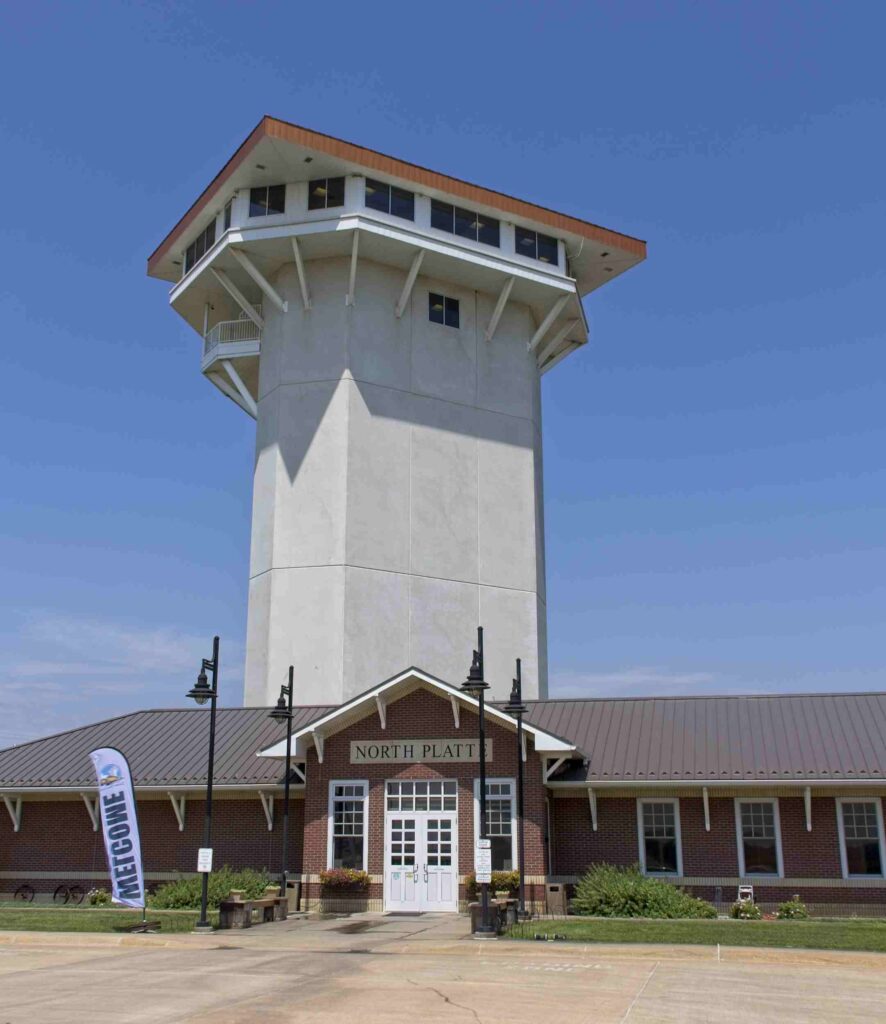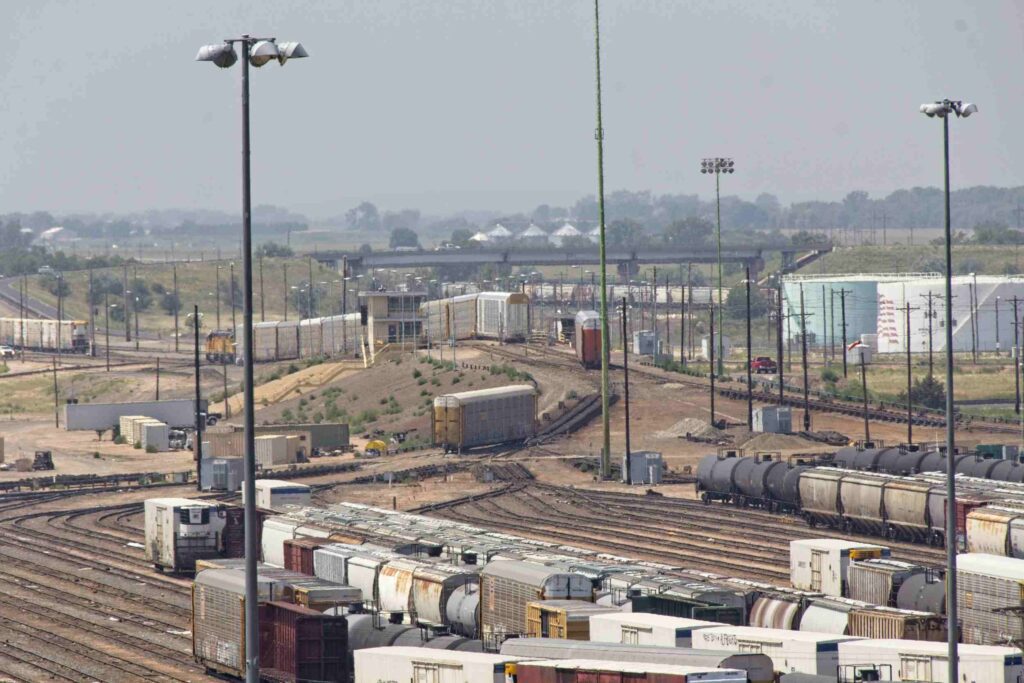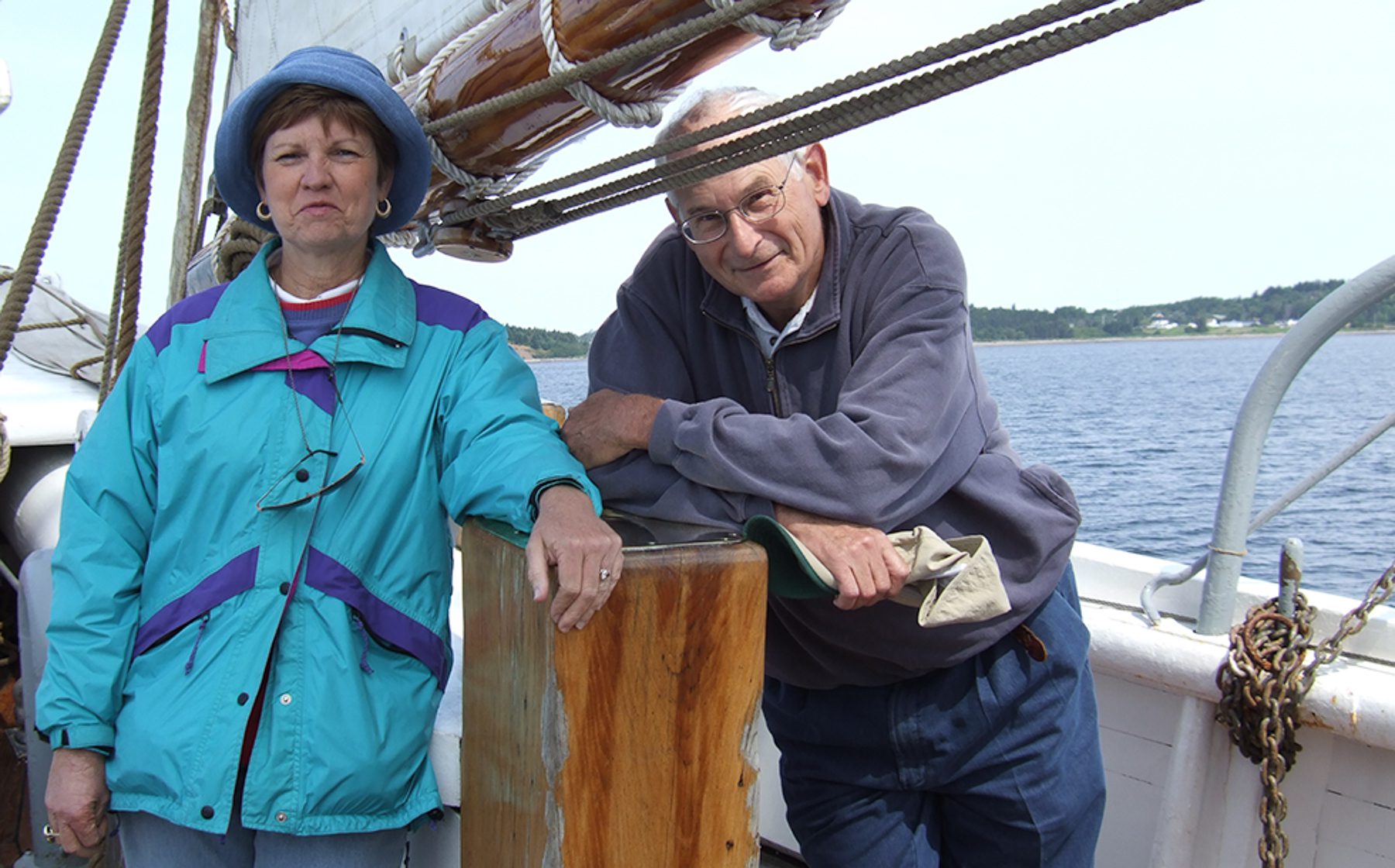Union Pacific’s Bailey Yard in North Platte, Nebraska is the largest railroad classification yard in the world. Named in honor of former Union Pacific President Edd H. Bailey, the massive yard covers 2,850 acres, reaching a total length of eight miles. The yard is located in the midst of key east-west and north-south corridors, on the busiest freight rail line in America, making it a critical component of Union Pacific’s rail network.
Bailey Yard has 17 receiving and 16 departure tracks handling 14,000 rail cars every 24 hours. 3,000 cars are sorted daily in the yard’s eastward and westward yards, nicknamed “hump” yards. Using a mound cresting 34 feet for eastbound trains and 20 feet for those heading west, the hump yards allow four cars a minute to roll gently into any of 114 “bowl” tracks. Here they become part of trains headed for destinations in the East, West, and Gulf Coasts of America, as well as the Canadian and Mexican borders. An average of 139 trains per day is largely comprised of raw and finished goods, such as automobiles, coal, grain, corn, sugar, chemicals, and steel along with consumer goods, including electronics, apparel, and other retail products.
To keep America moving forward, the train operations and repair shops at Bailey Yard are open 24 hours a day, seven days a week. The fueling and service center processes more than 8,500 locomotives each month.
A nonprofit organization named Golden Spike Tower provides an eight-story building from which visitors can observe and study the workings of the Bailey Train Yard. The building was built in the shape of a railroad spike and named in honor of the Golden Spike used when the Union Pacific and Central Pacific railroads met at Promontory, Utah to complete the Transcontinental Railroad on May 10, 1869.
After spending about an hour viewing the operations of the railyard, Meriam and I spent another 30-45 minutes reading the posted material about the history of the yard and its various yard operations.
One very interesting rail-related historical event neither Meriam nor me had ever heard of – it’s called the Merci Train! Most of you know that at the end of World War II Europe was devastated. In response to the Marshall Plan where the US sent money, supplies, and various forms of assistance to Europe (including France). As a token of appreciation, the French people donated thousands of personal items to the US. These items were packed into 49 railcars (called 40 and 8 cars) and sent to America, one car for each state (then 48 states) and 1 car to be split between Washington, DC, and Hawaii, neither of which was a state.
The significance of the 40 and 8 railcars is noteworthy. Prior to World War I, originally these French railcars were designed to haul 40 men or 8 horses. When World War I arrived, these cars were utilized by American soldiers for transportation throughout the war front. Fast forward to World War II and they were used for a similar purpose. While being a very uncomfortable ride, the Americans came to love them. Societies in the US were even formed around returning soldiers who had traveled in the 40 and 8 cars.
So, it was only natural that France used these 40 and 8 railcars to transport their donated items of appreciation to each state in the Union.
Our question is: Why have we never heard about the – Merci Train! You would think some of us would have been taught this in school.
As a side note, the Texas Merci Train is on permanent exhibited at Camp Mabry in Austin. So where are the other state’s Merci cars and are their contents? The links below provide some of this information.
and
https://en.wikipedia.org/wiki/Merci_Train
One more diversion for this final posting. Before we made our mad dash home to Jefferson, we spent our final couple of days revisiting Slough Creek in Yellowstone. We had hoped to get some more viewing of the wolves, but alas, they did not cooperate. However, we did get some interesting views of a large family of Pronghorn Antelope watering very close by and were able to revisit some mountain goats scaling some vertical cliffs in the park.
All in all, we had a great vacation and we thank all of you for choosing to travel with us. Harold and Meriam








Joseph G HuntThank y’all for letting me join you on your trip
HaroldGary, we really enjoyed your company!
mao Thanks for all the information you shared with us over the course of your “train” trip, and of course all the many photos (suitable for framing). I really enjoyed the ride. Where are we going next?
HaroldGlad to have you along, MAO. Some possibility of Tennessee area in the fall…
Susan MossMeriam snd Harold,
I have been reading your blog this summer and do enjoyed traveling with you in this way. Your information and photos were top notch.
Thank you so much for sharing!
Susan Moss
HaroldSusan, MB says HI. We are most pleased you enjoyed the ride. Please travel with us again
LisaWonderful photos and stories. Thank you so much for sharing with us!
HaroldYou are most welcome, Lisa.
Virginia PeveyHarold, I’ve really enjoyed your travels and your pictures are beautiful. Thank you for letting me travel along your journey. I know how time consuming blogging can be. So glad to have y’all home.
HaroldVirginia, thanks for the comments. Meriam and I are most pleased you enjoyed the blog. Hopefully, you will travel with us again.
SherilynI feel as if I’ve been on vacation myself! It was much fun! Thanks so muc .
HaroldThanks for traveling with us, Sherilyn. Until next time…